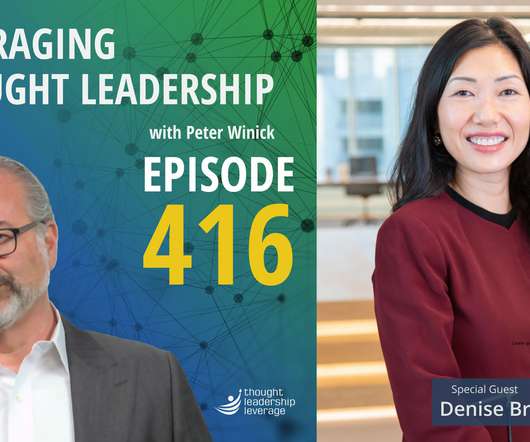How to Use ABM to Drive Revenue Growth and ROI
Chief Outsiders
FEBRUARY 7, 2023
By: Carol Eversen and Jeff Loeb As fractional CMOs with deep experience implementing ABM across many B2B companies, we see a pattern emerging: business leaders have very different perspectives about what it takes to implement ABM and how to get started.




















Let's personalize your content